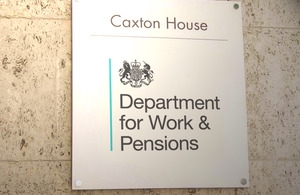
Pandemic failed to halt growth of workplace pensions

The percentage of workplace pension savers who actively stopped saving fell slightly during the Coronavirus pandemic, according to data released this morning.
The proportion of workplace pension savers who have made the active decision to stop saving has fallen slightly from 0.75% in the financial year 2019-20 to 0.63% in the financial year 2020-21, according to the data from the Department for Work and Pensions.
The figure is broadly consistent with previous tax years.
Contribution rates also held firm, with most employees contributing more than 4.5% of relevant earnings to their retirement. While a fall in pension contribution rates was recorded in the first half of 2020 this recovered in the second half of the year
Total annual savings for eligible savers increased to £105.9bn, an increase from £98.4bn last year mainly driven by a £5.7bn increase from the public sector.
Joshua Gerstler, Chartered Financial Planner at Borehamwood-based Financial Planning firm The Orchard Practice, said the pandemic has seen many of the firm’s clients increase their monthly contributions to their pensions.
He said: "Outgoings during the pandemic fell for almost everyone as there were no meals out, holidays, gyms and other ways to spend money. As a result, where possible our clients increased the monthly contributions they were making into their pensions and investments.
“As life has started to return to normal, many of our clients are keeping these higher contributions in place as they have realised they can in fact manage with less disposable income, and that this will enable them to retire even earlier and spend more time enjoying life, which has been brought into sharp focus by the pandemic."
Permanent Wealth Partners, a Financial Planning firm based in London, has been advising its clients to invest as much in their pensions as possible during the pandemic.
Adam Walkom, co-founder of the firm, said: “Our clients tend to be higher earners, so most tend to look to maximise pension contributions where possible, and have stuck to that approach even during the pandemic. We also have an in-house view that pension tax relief is only going to get worse, so taking advantage of it where possible is normally a prudent move.
“For most people, their pension is going to be the second-largest asset they ever own, yet they totally ignore it. Most people tend to look at their pension statement once a year, not really understand it properly, then just file it or throw it away. Everyone needs to take a long and hard look at what is in their pension.”
However, not all Financial Planning firms have seen clients increasing their pension contributions considerably during the pandemic.
Carl Roberts, managing director at Milton Keynes-based RTS Financial Planning, said his firm’s clients have mainly continued as planned with their pension savings with little change being made due to the pandemic.
He said: "Throughout Covid, the majority of our clients have continued exactly as they were, whether in relation to contributions to, or withdrawals from, their pensions. Where we did see some material changes on the retirement savings front was with our business owner and director-level clients. Understandably, many business owner clients either paused or significantly reduced their pension contributions during Covid because they were worried how their businesses were going to be impacted. Thankfully all have got through unharmed and have now restarted their pension contributions at the same level as before.
“For those that have actually saved more money during the pandemic, we have found that ISAs have become their preferred choice over pensions as they let people access their money quickly in a crisis rather than have to worry about the age restrictions that apply to pensions."
According to the DWP data, gaps across ethnic groups remain. Pakistani and Bangladeshi had significantly lower participation rates at 63% in comparison to an average of 83% in 2020.
Helen Morrissey, senior pensions and retirement analyst at Hargreaves Lansdown, said: "The evidence points to the enormous impact that auto-enrolment has had on the nation’s pension savings behaviour over the past decade. The participation of under-represented groups such as lower earners and younger age groups has been boosted massively. However, gaps clearly remain. The self-employed are out of scope and falling further behind and while the participation of Pakistani and Bangladeshi people has grown, they are still playing catch up."
According to the DWP data, 88% of eligible employees (19.4m people) are in a workplace pension scheme, up from 19.2m last year (the same proportion).
The biggest drop in contributions was among men in the private sector. The average amount saved by male and female eligible savers in the private sector fell in 2020 by £115 and £3 respectively; in the public sector, amounts saved increased by £161 and £189 respectively.
Female participation in workplace pensions increased in both full-time (90% v 88%) and part-time (86% v 73%) occupations.
Higher earners and those employed by large organisations were most likely to be participating in a workplace pension scheme.
From Financial Planning Jobs. For more click on any job.
-
Financial Planner - home based/UK wide - £60k+
Financial Planning Jobs Read more... -
Financial Adviser - London/South East - To £70k
Financial Planning Jobs Read more... -
Senior Financial Adviser - £65k-£75k - Bucks
Financial Planning Jobs Read more...
This is a selection of jobs from our new Financial Planning Jobs site - for more job vacancies click on any job or the link below.
Financial Planning Jobs https://jobs.financialplanningtoday.co.uk/
